From air suspension seats to marker lights, trucks have features that car drivers don’t get, and for very good reasons!
Longevity
You’ll be lucky to get a million kilometres out of your car before it becomes more expensive to fix than it’s worth, but that’s par for the course for a truck. In fact, two million is reasonably common as a truck could do more than 200,000km per year and be in operation for at least ten years.
Trucks have longevity and heavy-duty parts that are designed to last the distance.
Heavy duty trailers
A truck could have a semitrailer (i.e. a trailer that can’t operate unless it is supported at one end by a fifth wheel), or a full trailer that is towed using a drawbar. It’s advisable to get some truck and trailer reversing training as it can be tricky to manoeuvre them.
Blind spots
Cars do have blind spots, but to nowhere near the extent that trucks do.
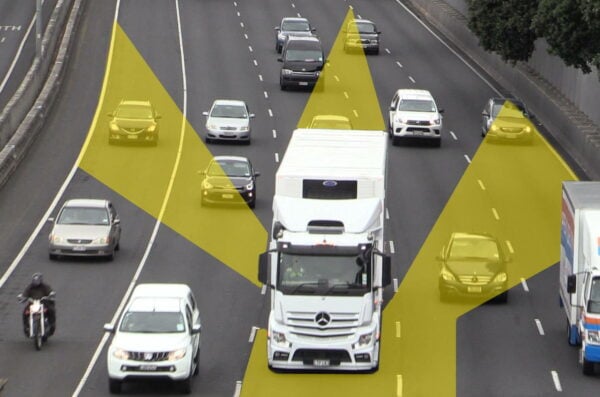
Despite having large mirrors, the yellow shaded zones represent the majority of the blind spots that truck drivers experience. The two main ones that car drivers don’t have are immediately behind due to no rear window, and immediately in front of the truck due to the height of the window.
Steering axles
Larger trucks might have between three and five axles. With four- and five-axle trucks, they often have two steering axles rather than just one. This makes them much more manoeuvrable at low speeds.
Lift axles
Axles are there to support weight. When the truck is running with a light load or empty, it may not be necessary to run all the axles on the ground. The rear axle of some trucks will lift up. This has three benefits: it improves fuel economy because there’s less rolling resistance, it reduces tyre wear through some of the tyres not being in touch with the road, and it reduces road noise.
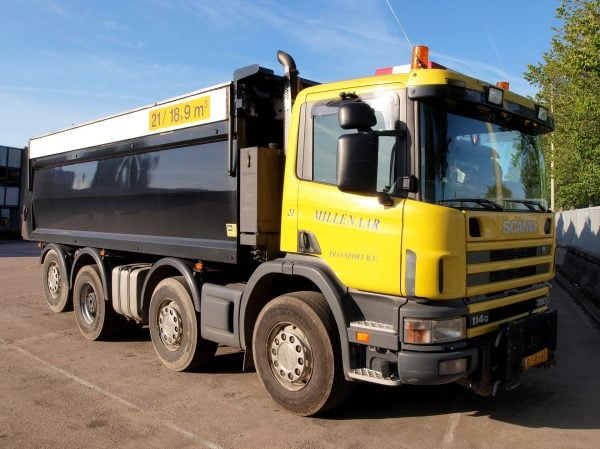
Locking differentials
While some four-wheel drives and SUVs have a locking differential, they are much more common on trucks that have the rear two axles as drive axles where they are called power dividers, axle interlocks, inter-axle diffs or cross locks. When a truck has two driven axles, they are often referred to as 6×4 or 8×4 units. In the cab, a button will control the axle interlock (this locks both axles together) and the differential (this stops one wheel spinning while the other wheel is stationary.
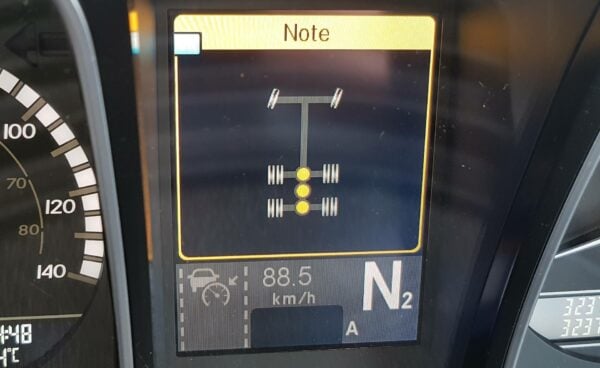
Wheel nut indicators
Due to the vibration, wheel nuts on trucks can work their way loose; this doesn’t tend to happen on a car.
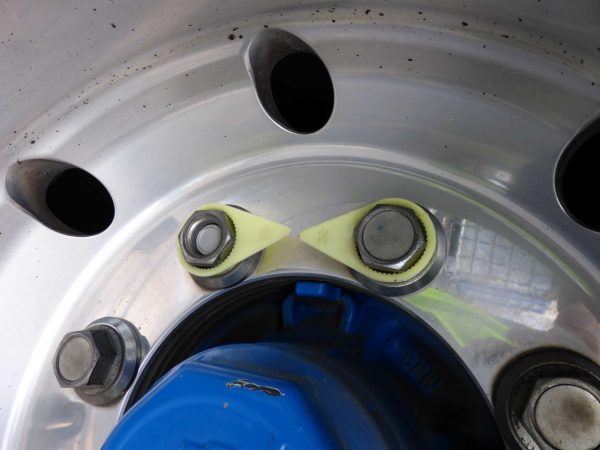
The indicators show if a nut has started to come loose; it can then be retorqued.
Vertical exhausts
Some trucks have the exhausts up the back of the cab so that the polluting air isn’t released at head height; this is less common these days with most trucks going to at least Euro V standard and having the exhausts exit on the driver’s side just behind the cab.
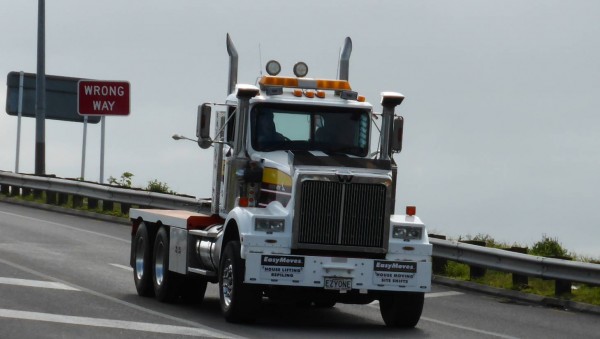
Power take-off (PTO)
Power take-off is a means of taking power from the engine and supplying it to something else, such as a crane.
Lots of gears
Due to the weight of trucks (40 tonnes and upwards in some cases), they need a lot of gears to maintain the rev counter in the range of maximum torque. It’s common to have 18 gears in a Roadranger-type non-synchro gearbox. Training for Roadranger gearboxes is important.
Economy and range
While a truck will never be as fuel efficient as a car, truck manufacturers know that drivers need to get as far as possible without filling up. This is why a truck can have fuel tanks exceeding 1000 litres – not bad when uphill you might be doing 2 litres per km.
The rev counters also have a green band to show the driver the optimal rev range to operate the truck.
Toolboxes
Some utes have toolboxes on the back, but almost all trucks have them as standard because the driver needs to store load securing devices, or the remote controllers for auxiliary equipment like truck loader cranes or sideloaders.
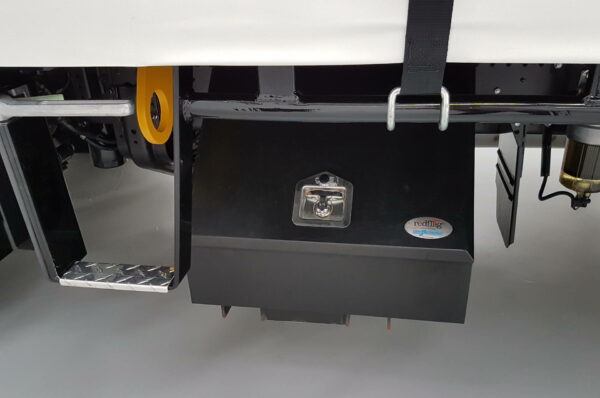
Cabin amenities
Trucks come in different configurations depending on whether a driver needs to be able to sleep in the cab (a sleeper cab), or it’s just a ‘day cab’ where the driver would return to the depot.
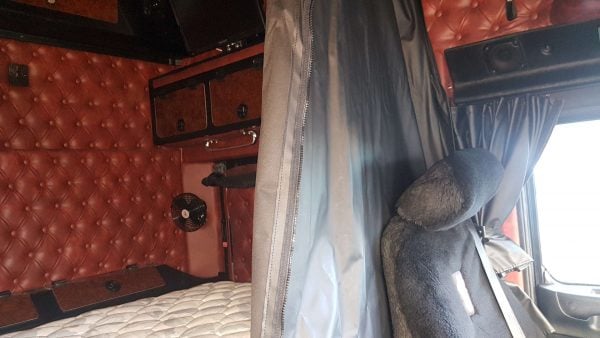
A sleeper cab can contain things like a microwave, fridge, TV, wardrobe and more.
In larger trucks, the driver will have an air suspension seat to dampen the harshness from the road; this is particularly important with cab-over trucks where the seat sits over the front wheels.
Marker lights
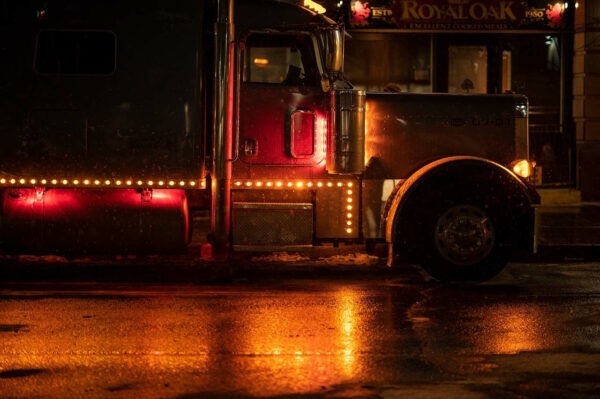
Trucks, especially large and long trucks, have marker lights down the side and across the top. This is to assist with visibility for other road users, but it also provides a level of light if the driver is working at night.

